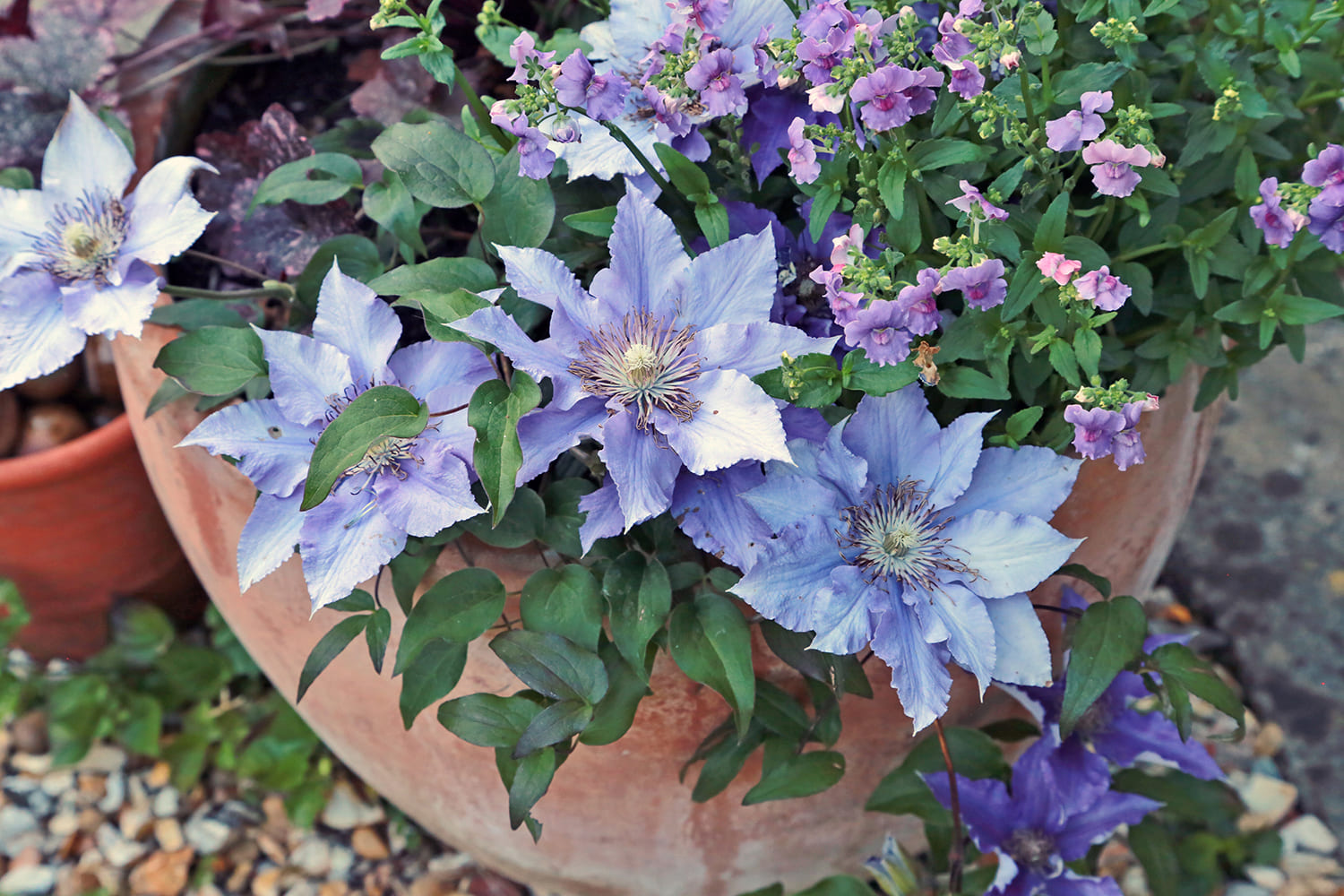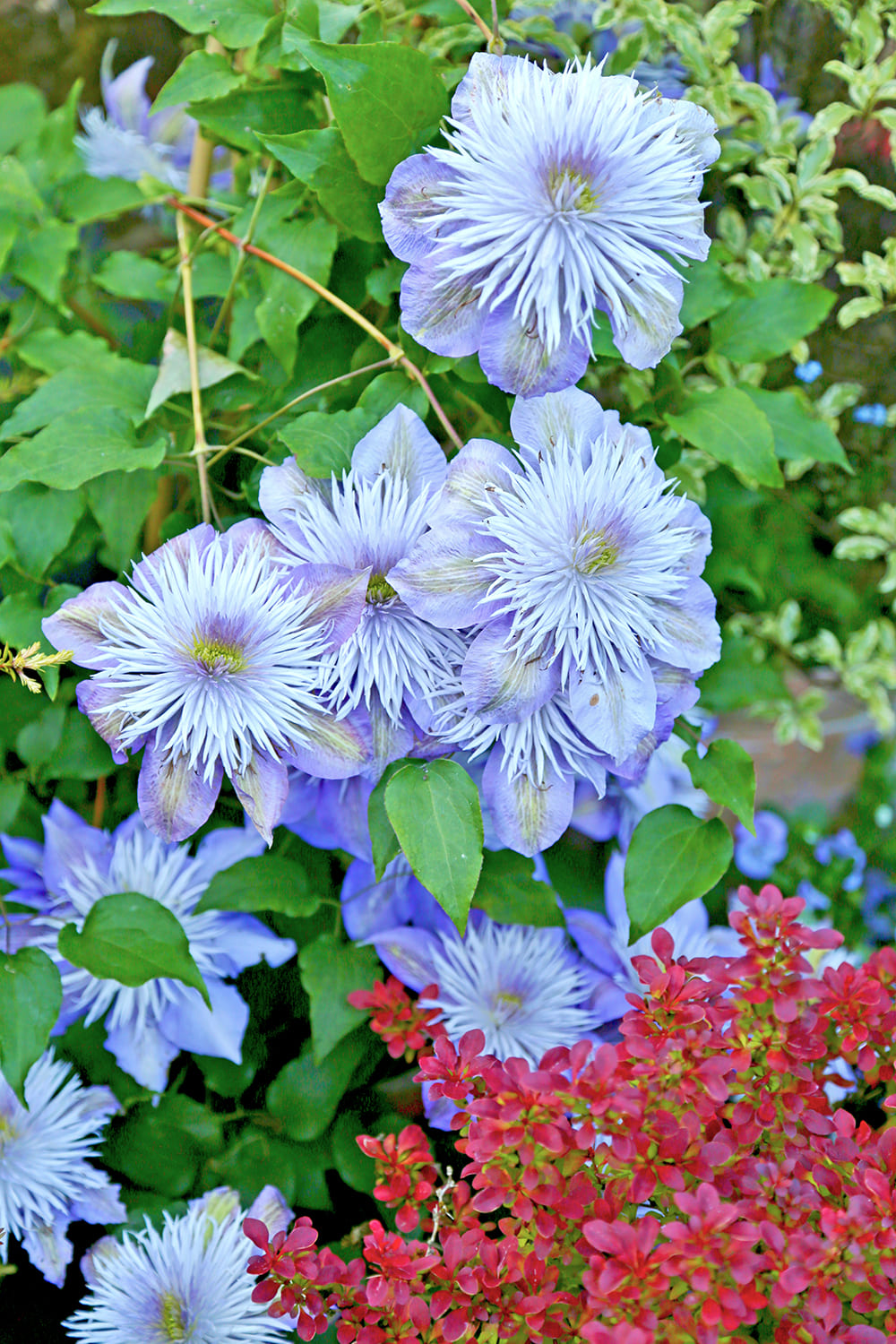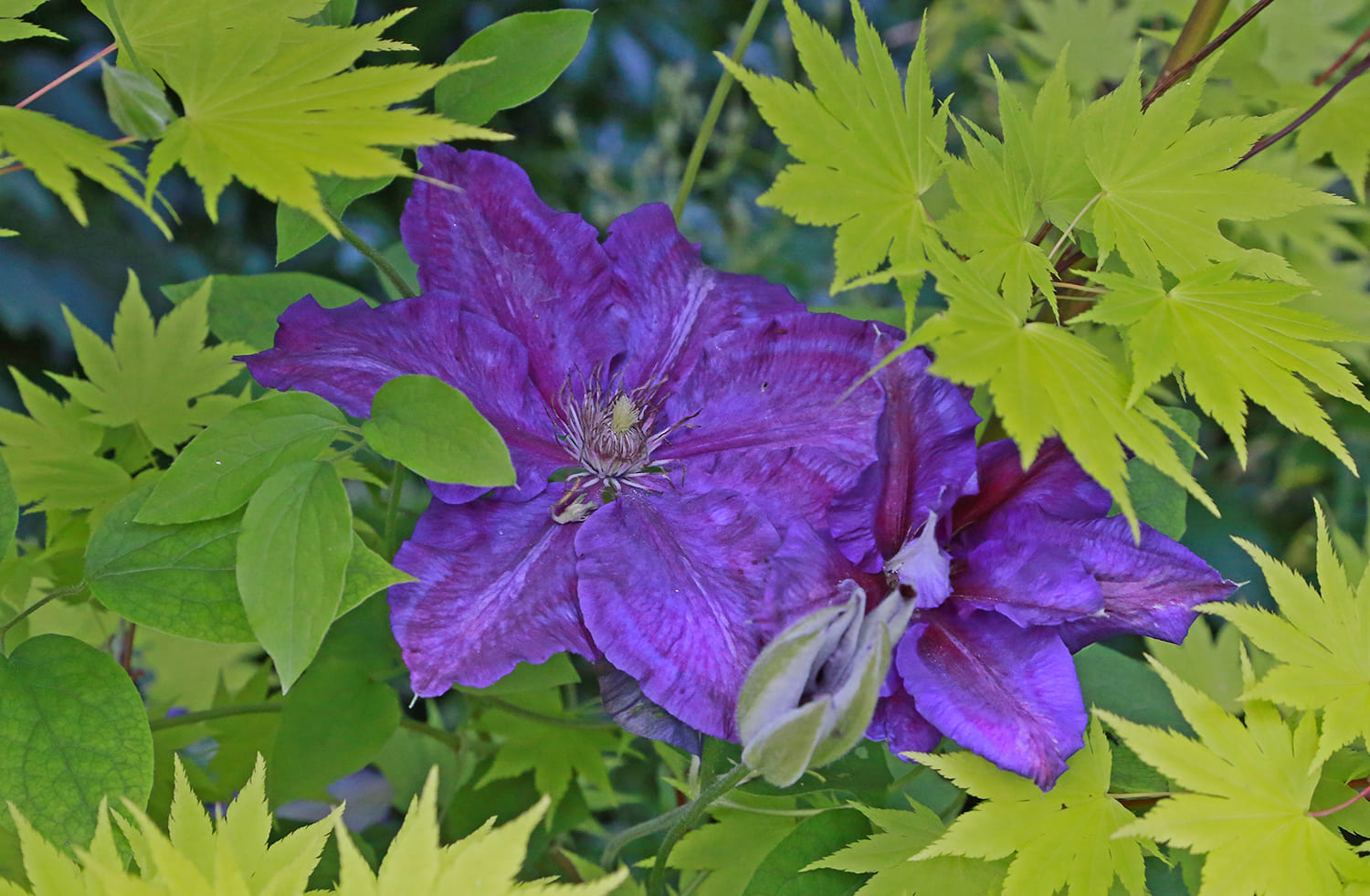Making the most of Clematis
Few can resist the allure of clematis, aptly referred to as “Queen of Climbers”, from the small flowered, prolific early flowering varieties that drape themselves through trees and over buildings, to the flamboyant large-flowered hybrids with their magnificent, saucer-like blooms that make dramatic impact from late spring to autumn. You may think of them as subjects to train on walls and fences, on wires or trellis. Or you may associate them with arches, arbours and pergolas; however there are other ways that they can be used in the garden to really make the most of these versatile plants.
Grow clematis in pots
Not all large-flowered clematis are vigorous climbers which romp up any support they are given. Plant breeding has produced more compact varieties, such as the lovely ‘Crystal Fountain’ which repeat flower throughout the season and produce blooms from the base of the plant upwards with minimal pruning. These compact varieties are perfect for growing in containers: ideal for balconies, courtyards, patios and today’s small gardens. Choose pots which are nice and deep and at least 40cm in diameter for best results. Pot them in John Innes No.3; this is better than soil-less composts at retaining moisture and nutrients.

Grow clematis with summer bedding plants
Compact trailing clematis such as ‘Bijou’ are ideal for patio pots and hanging baskets where they can be allowed to spill over the edge. A few seasonal bedding plants planted in the same container are beneficial because they shade the soil surface, keeping the roots cool. All will benefit from liquid feeding during the summer with Vitax Tub & Hanging Basket Feed. At the end of the season the annuals can be removed and the clematis left in the pot over winter. Only light pruning is necessary in early spring to remove any straggly growth. Then top up the compost and add a handful of Vitax Clematis Fertiliser to feed the plant through the season.

Shade the roots
Clematis like their roots in the shade and their tops in sun or semi-shade. If growing in a pot, shade it with another container placed in front. In the open ground plant in the shadow of other plants and cover the soil surface with low growing perennials or annual plants. Stones and pieces of slate are often recommended but these heat up in sunlight, warming and drying out the soil beneath which can be harmful.
Grow clematis through shrubs
Shorter growing clematis are ideal to grow through shrubs to extend the flowering season, or to add a different dimension to foliage subjects. For example, a pale, summer-flowering clematis such as ‘The Countess of Wessex’ is perfect when grown through the spring-flowering Magnolia stellata. Once the starry blooms of the magnolia have faded the clematis grows and takes over, its large flattened flowers opening on the branches of the shrub. In winter the fine, trailing stems of the clematis are easy to identify and can be cut back as necessary in preparation for the following year. Here again both clematis and magnolia will benefit from an annual application of Vitax Clematis Fertiliser at the beginning of the growing season.
For a striking colour combination try Clematis x durandii growing through Berberis thunbergii ‘Rose Glow’. The rich, dark blue clematis blooms are stunning against the wine-red foliage of the berberis. This clematis requires only light pruning in late winter, cutting back to where fat growth buds are most active. When planting, avoid planting too close to the shrub and lean the plant to grow in the right direction. Plant around 5cm deeper than the clematis is growing in the pot, in a position where the soil is shaded by the shrub. Water well and remember to feed annually for the best flowers.

Make pruning and feeding simple
Advice on clematis pruning is often complicated and difficult to follow. If in doubt always think about when the clematis flowers. If it blooms in spring, prune straight after flowering. If it blooms in summer and autumn on the new shoots, prune in winter or very early spring before growth commences. Modern varieties require very little pruning, just a tidy up and removal of dead or straggly shoots after flowering.
Clematis need the right nutrients to produce a spectacular display each year, so both new and established plants need feeding. Vitax Clematis Fertiliser, applied at the beginning of each season, supplies just what they need for healthy growth and beautiful blooms year after year.
Andy McIndoe
For Vitax
Your login details have been used by another user or machine. Login details can only be used once at any one time so you have therefore automatically been logged out. Please contact your sites administrator if you believe this other user or machine has unauthorised access.












